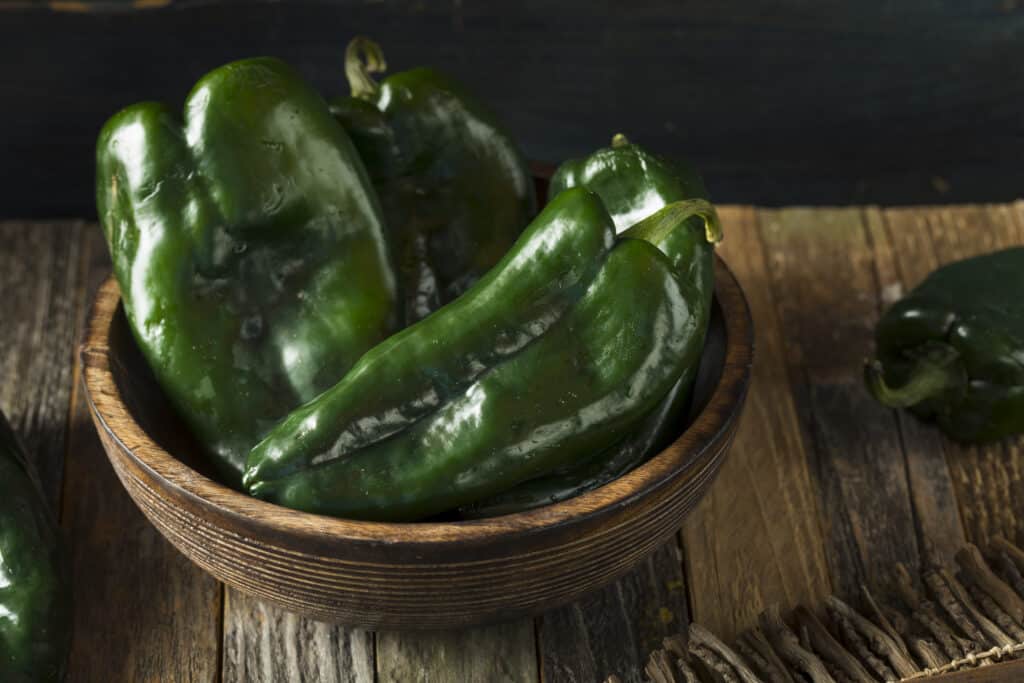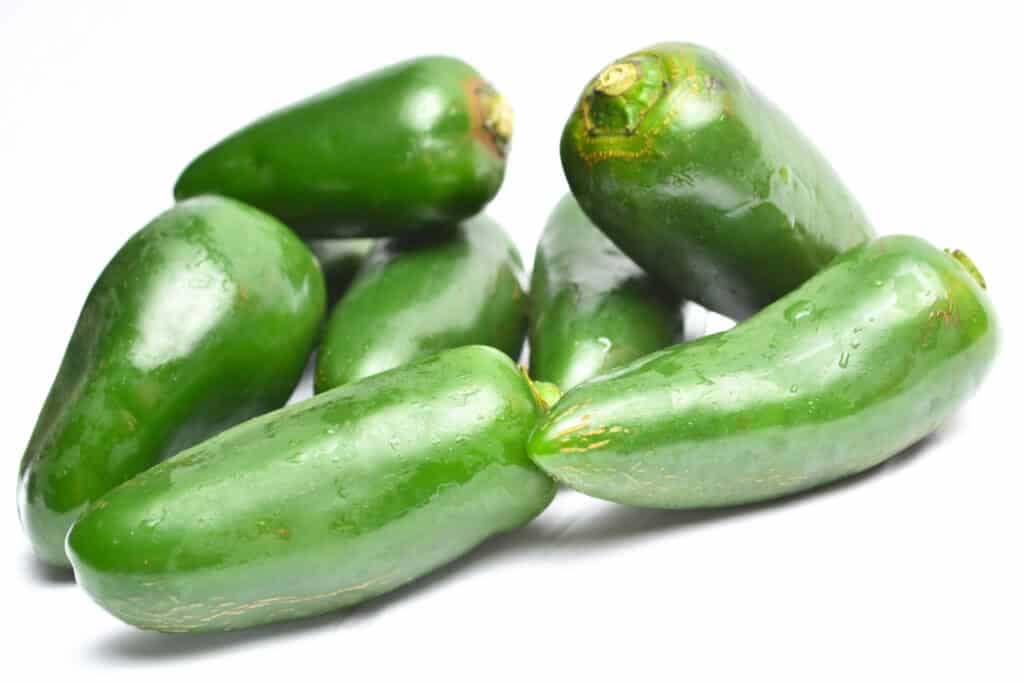Jalapenos are a staple in many kitchens. They’re versatile, pretty easy to grow yourself, and have a great flavor that pairs well with just about anything (including chocolate). But there’s another pepper out there that can give your jalapeno a run for its money: the poblano.
The first thing most people notice about jalapenos is their heat level. They’re pretty spicy, but not so spicy that they’ll burn your tongue off or make you spit fireballs out of your nose.
But what we love about jalapenos is how versatile they are: you can use them in salsas and salads, stuff them with cheese, or just eat them straight up. They’re great for cooking because they have a lot of flavor on their own but also pair well with other ingredients and spices.
Poblano peppers are a bit different than jalapenos — they’re milder in terms of heat level, but they also have more flavor. Poblanos are often used in Mexican cuisine because they have a smoky flavor that goes really well with beans and rice. They’re also great roasted over an open flame like a campfire. The charred skin adds a layer of crunchy goodness to whatever dish you make!
Comparing Poblano Peppers and Jalapenos
| Poblano Peppers | Jalapenos | |
|---|---|---|
| Classification | Species: Capsicum annuum Origin: Puebla, Mexico | Species: Capsicum annuum Cultivar: Jalapeño Origin: Mexico |
| Description | – 5 feet tall and 1-2 feet wide – Pepper is bell-shaped, 4 inches long, and 2 inches wide – Leaves are lance-shaped and alternate | – 3 feet tall and 1 foot wide – Pepper is elongated, 2-3 inches long, and 1 inch wide – The fruit turns red when overripe |
| Scoville Rating | 2,000 SHU | 10,000 SHU |
| Uses | Low in calories, high in fiber, antioxidants, and vitamins | Low in calories and contain capsaicin, vitamins C and B6 |
Poblano Pepper vs. Jalapeno: Classification and Origin
Poblano pepper, Capsicum annuum is native to Puebla, Mexico. They have a mild flavor compared to other peppers in the same family. However, the plant can grow red poblanos, whose flavor can vary in heat intensity. Poblanos can also be mistaken for pasilla pepper, especially in the United States, but there are distinct differences. Jalapeno peppers are officially the State Pepper of Texas. Also native to Mexico, these fiery peppers are a staple in Mexican food, such as salsa or pico de gallo.
Poblano Pepper vs. Jalapeno: Description
Most pepper plants look the same. While some may be taller and their pepper a different shape, you can tell there is a resemblance between them. In addition, they are all tropical perennials and thrive in sunlight. The fruit of pepper plants can be stocky bell shape, long or elongated banana-shaped, and either orange, green, red, purple, or yellow. Just two months into the growing season, peppers will begin to grow. In addition, pepper leaves are lance-shaped and alternate, and some cultivars have yellow or white flowers.
There are many cultivars of the species Capsicum annuum. Pepper plants can either be sweet or hot, but to fall under the sweet pepper category, they need to be close to zero on the Scoville scale. For example, poblanos are 2,000 SHU, and jalapeno peppers have a 10,000 SHU score on the Scoville scale.
The poblano pepper plant’s maximum height is five feet tall and 1-2 feet wide. The pepper is around four inches long and two inches wide and looks similar to bell peppers but not as round. They come in two colors, red or green, and the skin is thick.
On the other hand, jalapeno peppers grow to around three feet tall. The fruit (pepper) is roughly 2-3 inches long and 1-1 ½ inches wide and green in color that turns red when overripe. Bright green indicates the pepper will be hotter. As they change to a yellow or red color when they age, they lose flavor.

Poblano peppers (pictured) and jalapenos are often used in Mexican cuisine.
©Brent Hofacker/Shutterstock.com
Poblano Pepper vs. Jalapeno: Uses
This pepper has a slightly milder flavor than the jalapeno, but it still packs some heat. Poblanos are sweeter than jalapenos and have a hint of earthy undertones that make them perfect for cooking – you won’t get tired of them as you might with jalapenos after a while. They’re also more versatile than their fiery cousins and used as a base for sauces or stews. They’re great for roasting whole or chopped up into salads. However, since both jalapenos and poblanos have thick walls, you can stuff them with cheese or other savory foods.
Both poblano pepper and jalapenos are low in calories and packed with antioxidants, fiber, vitamins, and minerals. Poblano peppers are rich in riboflavin, iron, and vitamins A, C, K, and B6. In addition, studies suggest that poblano peppers can help with inflammation due to their capsaicin content.
Jalapenos are high in vitamins C and B6. They can even aid in weight loss by burning belly fat and boosting metabolism. Research also shows that jalapenos contain capsaicin which can temporarily soothe pain and help to prevent stomach ulcers.
Poblano Pepper vs. Jalapeno: How to Grow
How to Grow Capsicum annuum
Peppers are tropical perennials that love heat, so full sun exposure will make your poblano or jalapeno pepper plants thrive. Pepper plants don’t have strict soil needs. However, adding organic matter and keeping the soil neutral will help them grow big and healthy.
If you have a long rainy season, consider planting them in pots and keeping them indoors until the ground gets warm. Don’t be concerned if you don’t see your seedlings growing right away. Hot peppers, specifically, are slow to germinate, and you may only see growth in 8 weeks. Some gardeners will add heat below, such as a heating pad, to speed up the process. Once you see true leaves developing, you can plant them in larger pots at around six weeks.
Peppers are susceptible to the cold, so keep temperatures above 50°F. Once you are ready to grow them outdoors, plant the roots 1 inch deeper than what you had them in the pots and 14 inches apart from one another. Finally, regularly water your pepper plants and protect them from drought, as they can lose their flowers.
Depending on growing conditions, pepper plants take 2-4 months to mature, but you may wait longer. Cutting is an excellent method of harvesting hot peppers. While you might get tempted to snap the peppers right off the stem, you could break off more of the stem.

Like poblano pepper, jalapenos (pictured) have thick skin, making them more versatile in the kitchen.
©Sivapoom Yamasaki/Shutterstock.com
Pests and diseases that can harm pepper plants:
- Beetles: Various beetles, such as palestriped flea beetle, will eat the leaves from jalapeno plants, preventing them from reaching maturity.
- Worms: Tomato fruit worms, cutworms, or beet armyworms will attack pepper plants in their seedling stage.
- Aphids and mites: Green peach aphids can spread viruses and feed on peppers and leaves.
- Viruses: Many viruses can attack your plant individually or in combination, such as the pepper mottle virus, the cucumber mosaic virus, or the potato virus.
Final Thoughts
Jalapenos are a staple in many kitchens. They’re easy to find, they’re affordable, and they’re delicious. But if you’ve ever tried poblano peppers, you know they’re in a league of their own.
Poblano peppers are a little sweeter than jalapenos and have less sharpness. They also have thinner walls, making them easier to stuff with cheese or cream cheese. These peppers are great for making stuffed peppers or as a base for a salsa verde.
Jalapenos are still good on their own — they retain some sweet flavor but add a bit of spice that can be fun if you like spicy but not too hot. They’re perfect for adding to your favorite salsa recipe or just eating raw with some lime juice squeezed over the top!
The photo featured at the top of this post is © Quang Ho/Shutterstock.com
Sources
- Wikipedia, Available here: https://en.wikipedia.org/wiki/Jalape%C3%B1o
- Masterclass, Available here: https://www.masterclass.com/articles/a-guide-to-the-scoville-scale
- Healthline, Available here: https://www.healthline.com/nutrition/what-are-poblano-peppers#history
- National Library of Medicine, Available here: https://pubmed.ncbi.nlm.nih.gov/22634197/
- SFGATE, Available here: https://homeguides.sfgate.com/diseases-pests-jalapeno-pepper-plants-39898.html
FAQs (Frequently Asked Questions)
Which is spicier, poblano or jalapeno?
Jalapenos are spicier than poblano. Jalapeno peppers has a 10,000 SHU score, while poblano is 2,000 SHU.
What pepper is similar to poblano?
Substitutes for poblano peppers are serrano pepper, banana pepper, green chili, and ancho chile.
Which is hotter, green or red jalapeno?
Red jalapeno peppers are typically hotter than green jalapenos.
Can jalapeno peppers be eaten raw?
Yes. You can eat jalapenos raw, dried, smoked, or cooked.
Thank you for reading! Have some feedback for us? Contact the AZ Animals editorial team.






